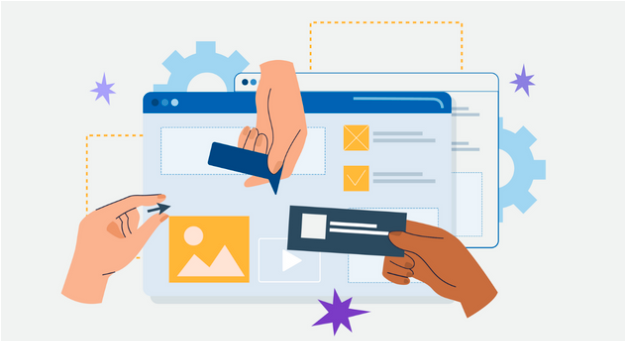Websites that are easy to navigate attract more visitors. An important aspect of any website is its user-friendliness, especially when it comes to navigating the site. This ensures that visitors to your site won't waste time trying to figure out the basics.
In all seriousness though, what does "intuitive design" entail? Just how does it appear? More importantly, how do we go about making a website that is easy to use?
In this piece, I'll explain all you need to know about making a website's interface intuitive and user-friendly, and I'll also demonstrate some of the problems that might arise from a poorly designed interface.
Web Design Fundamentals
Something is invisible when it is intuitive. It is considered an intuitive design when the user can finish the task without any prior planning.
Consider the case of a car rental during a vacation. You are shown to the vehicle, given the keys, and then left alone with it. However, there is no door handle, so you have no idea how to get in.
Where would you enter from? Another instance of a counterintuitive layout. When one must concentrate more than necessary to figure anything out, productivity suffers. You normally go up to a car and jump right in, but for some reason, you can't do that now.
Ok, let's get back to web development. What exactly do we mean by "intuitive design"? If visitors to your site can quickly and easily find the information they need, then you're good to go. If your design is too simple, no one will notice — until it isn't!
Intuitive to Whom?
Users will have varying expectations of what constitutes "intuitive" when it comes to websites. Everyone has their own quirks and individuality. What comes naturally to a computer programmer may not occur to a vendor at a street fair.
You can't just throw together a website using WordPress, hope it turns out well, and follow the latest design trends. Most websites are designed with intuitiveness in mind, but users are the only ones who can truly judge whether or not the site is user-friendly.
You must, then, think about the people who will be visiting your site and, from there, choose how best to present information to them through intuitive design.
Stores of information
Unless it's really rare, it's unlikely that a first-time visitor to your site will be completely unfamiliar with the subject matter it covers. In all likelihood, they will have experience with equivalent online resources or goods.
If you are familiar with the process of online shopping but have only ever shopped at X and not Y, you will still be able to make purchases from Y without any difficulty.
If you utilize quality font collections, they'll understand right away. Some readers won't make it past the first page if the font examples aren't basic and easy to read.
Users will require more handholding and find your website to be less intuitive if it doesn't conform to their expectations.
Searching And Navigating On A Website
The majority of users feel that simplicity of use is crucial to a successful website. Your website's usability will suffer if you don't take the time to organize your material properly.
Stop trying to be clever by giving your dishes meaningless names. It's crucial that readers understand the context of the link.
If a product is difficult to find on your website, over half of potential customers will not make a purchase. It's crucial that you can search the site. After all, without that prominent search bar, you'd have a hard time locating anything on Amazon.
Please Redesign Your Layout
You may want to hold off on a major revamp of your website if you have a stable and loyal customer base. Your most loyal customers are also the ones that have the most experience with your website and will feel the greatest impact from any changes you make.
No one is suggesting that you never change. You should give some serious consideration to the way and the specifics of the alterations you make to your site.
Some Other Factors
Several "rules" might be applied to the design in an effort to provide a more satisfying experience for the clientele. The Golden Mean and the Rule of Thirds are two examples of such guidelines. These are two fundamental ideas in the field of visual design, and they are frequently employed by web developers to create user-friendly websites.
Concluding Ideas
However, web designers often lack the requisite intuition when it comes to creating user-friendly websites. Not everyone, by any means. To attract more of your target audience, your website should be easy to use. Better conversion rates and customer loyalty can be expected from this demographic. Make use of statistics to investigate how visitors interact with your website, and recruit regular visitors to assist with usability testing.

